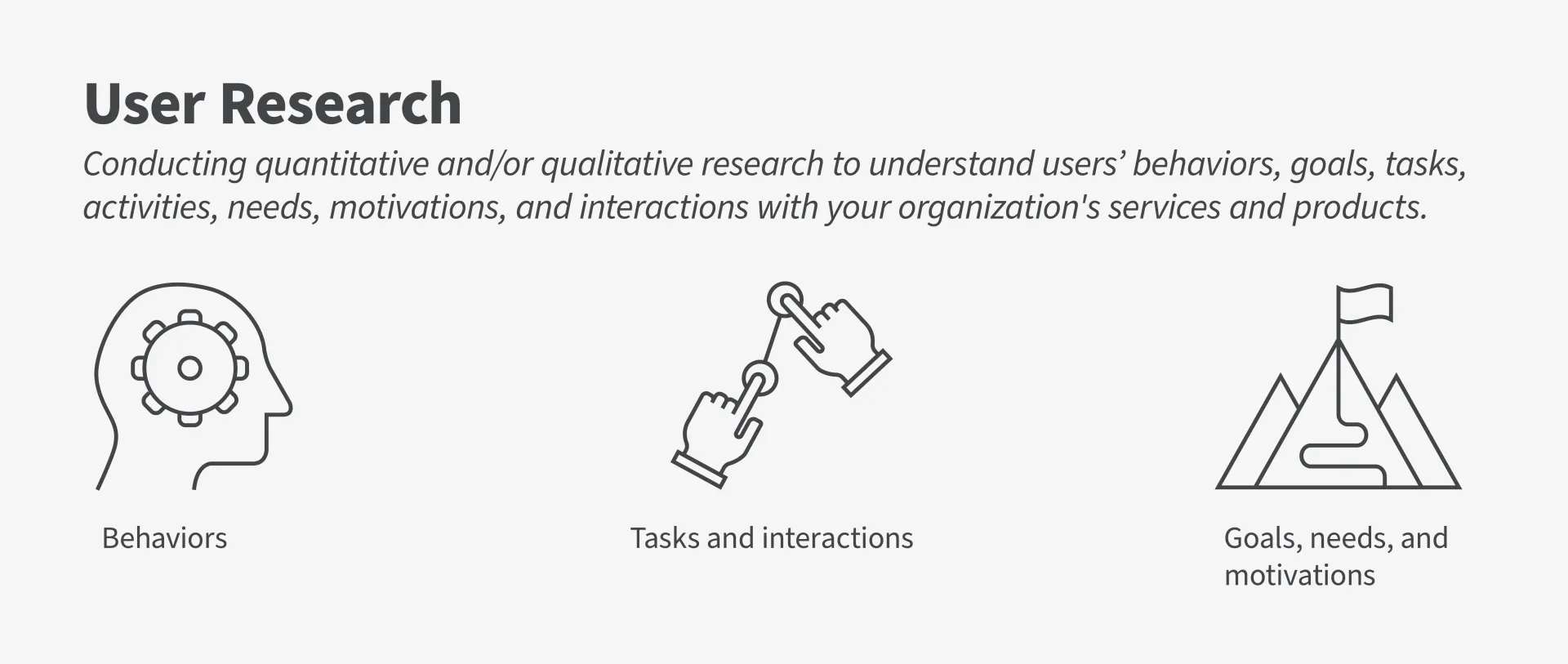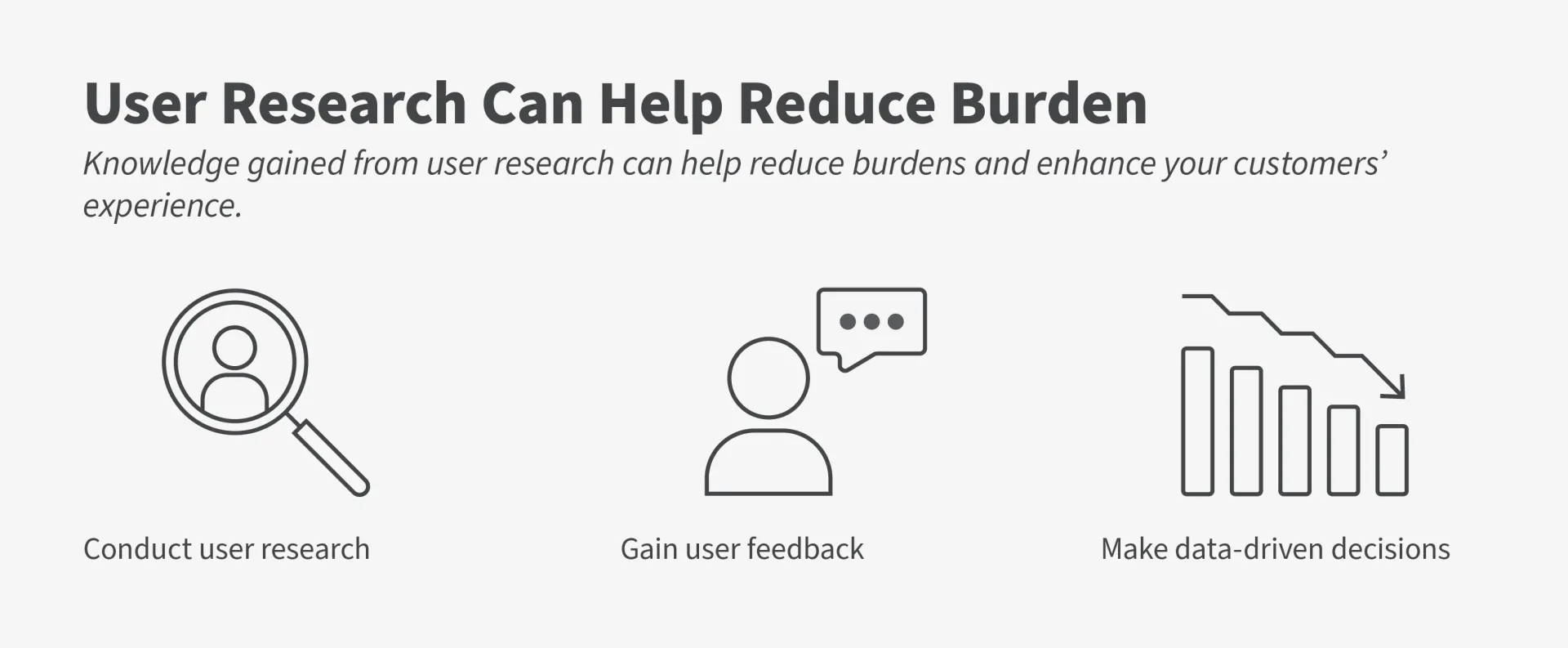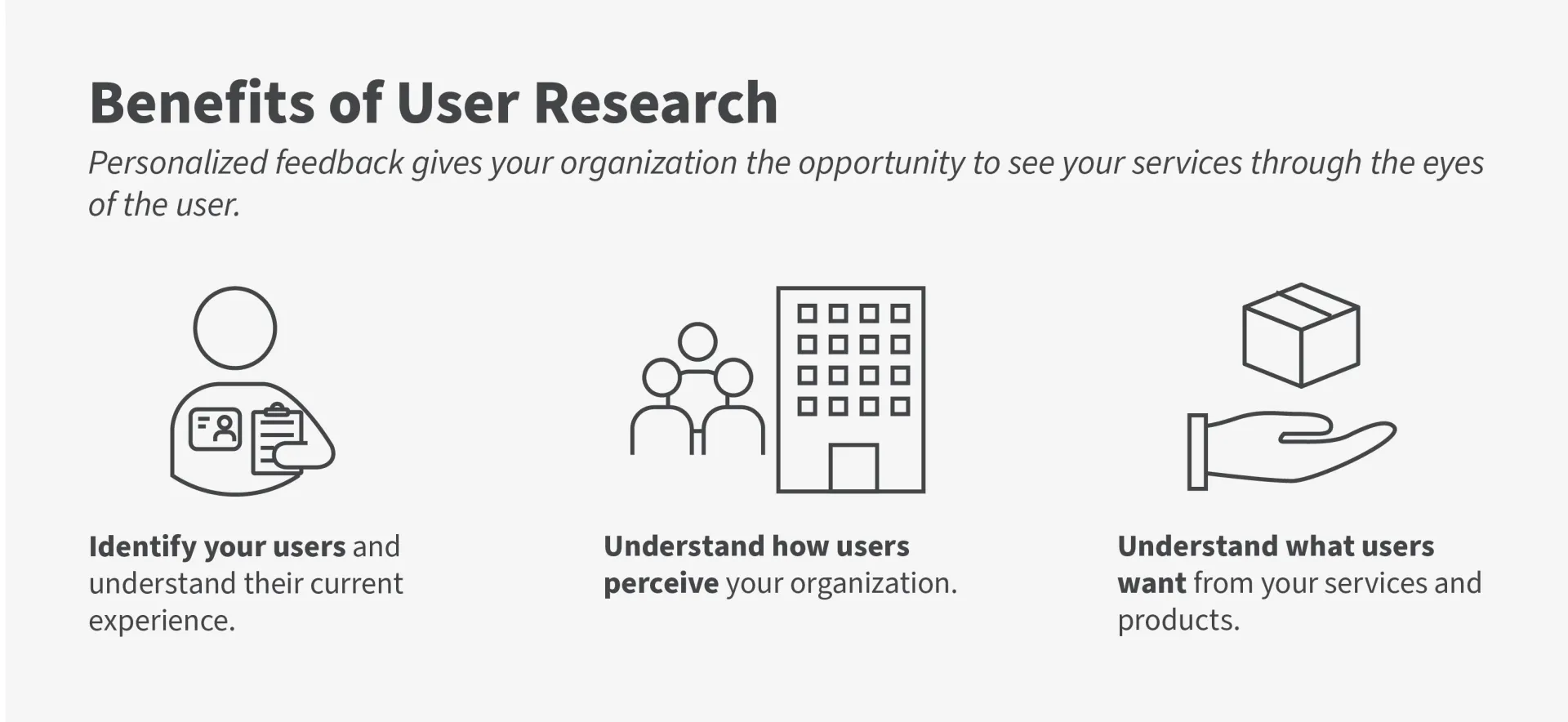Basics of User Research Lesson | 10 Minutes
Lesson Objectives
- Understand what user research is
- Understand an overview for conducting user research
- Understand how user research helps burden reduction
- Understand the benefits of conducting user research
Customer experience at DHS starts by focusing our attention on the needs, goals, and behaviors of our customers.
As we gain a better understanding of our customers, we can create services and products that are more accessible, effective, efficient, and equitable to those we serve. By putting the customer first, we are building trust, confidence, and ensuring our customers are satisfied with our government organizations.
To better understand our customers, we must start by conducting user research.
What is User Research?
User research is defined as:
Conducting research to understand users’ behaviors, goals, tasks, activities, needs, motivations, and interactions with your organization's services and products.
User research gives us the opportunity to use the information we learn about our customers and turn it into meaningful services and products that better meet their needs.
An Overview for Conducting User Research
Before conducting user research, create a plan that includes the questions you want to answer with your research, the methods of user research you intend to use to answer those questions, and your plan for recruiting the users you will need to participate in the research. Ensure that your efforts are accessible to all potential participants and that your participants are people in your customer base.
As part of your research plan, you will need to create questions to guide you through your research efforts. You can start this process by asking a few baseline questions:
- Who are my users/customers?
- What are they trying to do?
- How are they trying to do it?
- What is their situation/circumstance?
- What is their current experience like?
In addition to the baseline questions, you may have more specific questions you will try to answer based on the service or product you want to develop or refine.
After you conduct your user research and gather your findings, you will share your results with the rest of your team and relevant stakeholders. The efforts and findings of your user research will help your team create services and products that focus on the customers' needs and better serve them.
Remember that user research is a continuous process that your team should make time for throughout the lifecycle of services and products.
User Research and Burden Reduction
User research is a major ingredient in helping to reduce burden across DHS. When you conduct user research and collect user data, you are gaining actual feedback from the people you serve about what works well for them and what does not, and why. You will use that information to make data-driven decisions that improve the effectiveness of your services and products.
Whether it is cutting down the amount of time customers and employees spend troubleshooting challenges or creating more efficient workflows, knowledge gained from user research can help reduce burdens and enhance your customers' experience.
User Research Leading to Burden Reduction
United States Immigration and Customs Enforcement (ICE) conducted user research to better understand the experience of individuals who were required to visit an ICE Field Office to schedule a check-in appointment.
Based on the results of their user research, ICE created a web-based service to make the scheduling process easier and more accessible. The new tool allows noncitizens to schedule their required check-in appointments online where they can access information in several different languages and schedule appointments at a specific time and location.
This helps reduce the burden of those individuals who had previously struggled to understand the process for scheduling an appointment and had to travel to a Field Office to do so.
What Is the Benefit of Conducting User Research?
The personalized feedback you receive when you conduct user research helps you understand your customers’ current experience, how they perceive your organization, and what they want from your services and products.
Conducting user research helps your team:
- Identify your customer's needs, goals, behaviors, and uncover any pain points.
- Gain insights that can guide product development to ensure your team is building customer-focused services.
- Make informed decisions about what features to prioritize when updating services and products.
- Reduce the risk of building services and products that fail to meet your customers' needs.
- Save time and resources by creating services and products backed by customer data and avoid costly troubleshooting.
- Facilitate collaboration by creating a shared experience with your customers to understand their needs and preferences
In Summary
User research is an essential practice for ensuring your organization is creating and providing a positive customer experience. When you actively seek to better understand your customers, you can create services and products that are more accessible, effective, efficient, and equitable to best serve their needs.
CX at DHS starts by understanding the needs, goals, and behaviors of our customers. By conducting user research, organizations can gain invaluable information about the people they serve to deliver a better customer experience.
Resources
Article:
Why We Need UX Researchers and Designers in the Federal Government: Part 1 (DHS CX)
Why We Need UX Researchers and Designers in the Federal Government: Part 2 (DHS CX)
Web Resource:
18F User Experience Design Guide: Research (18F)
User research for government services: an introduction (GOV.UK)
User Research Basics (Usability.gov)
Download:
Customer Experience Center of Excellence Playbook (GSA)
Video:
Mitigating Bias While Building Research Practices (Digital.gov)
Discovery Research for Government Application Programming Interfaces (APIs) (Digital.gov)
UX Summit 2021: Equity-Centered Design: Challenges in Government (Digital.gov)



